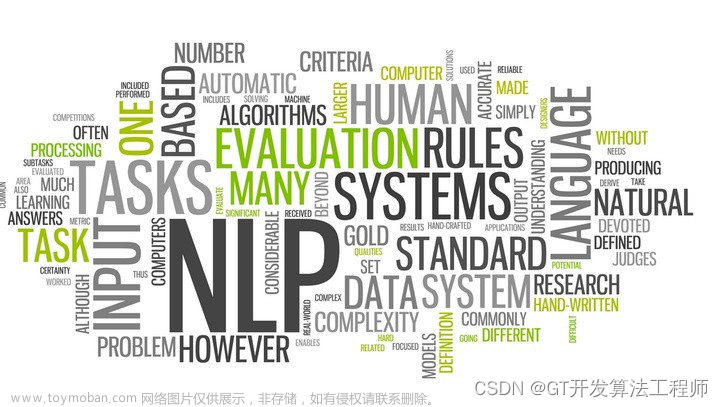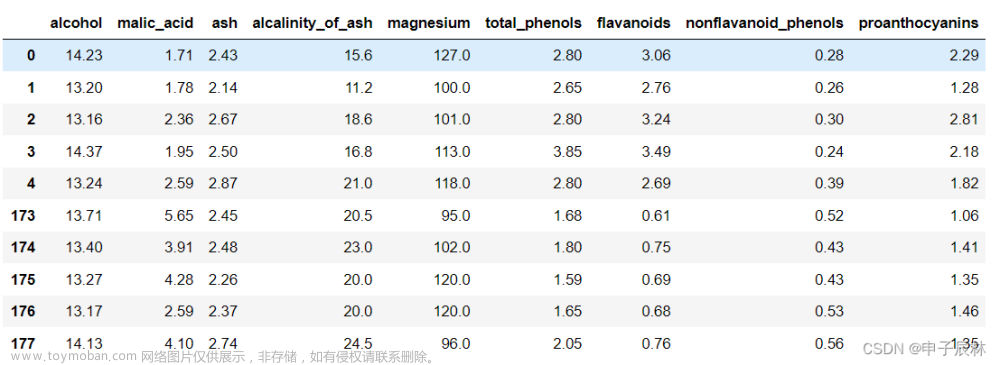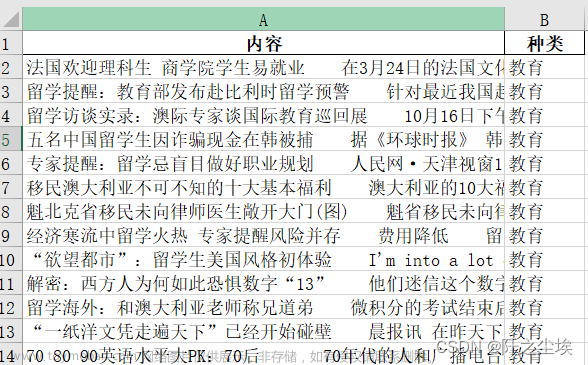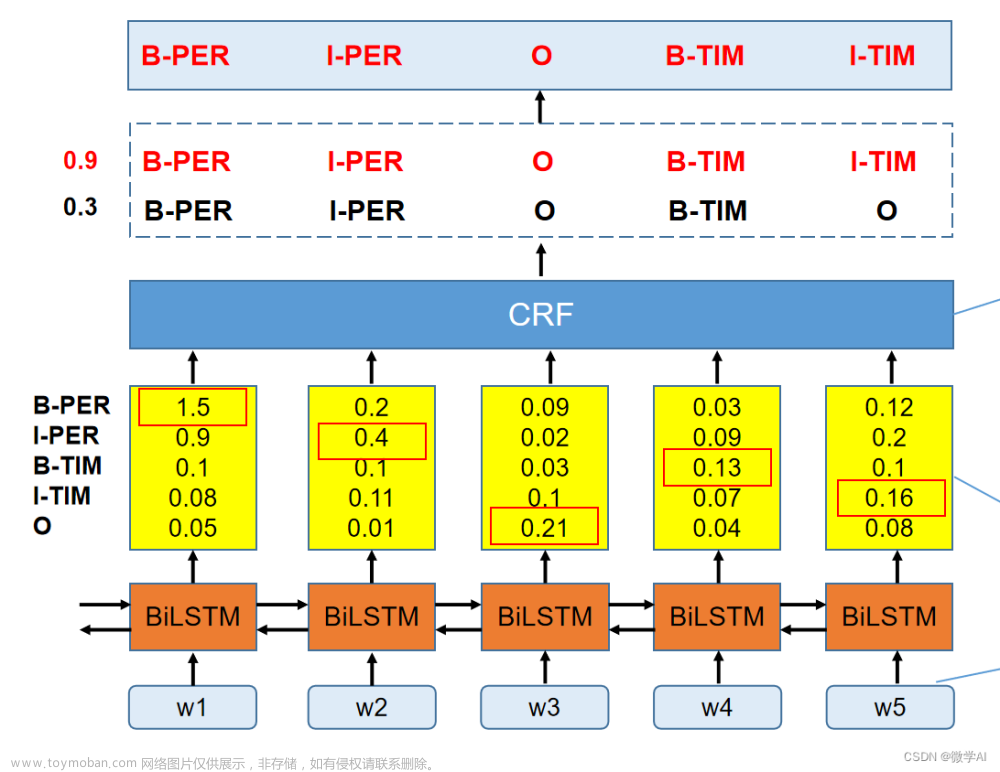- 在当今的大数据时代,文本分类任务在许多领域都有着广泛的应用,如情感分析、垃圾邮件过滤、主题分类等。为了有效地处理这些任务,我们通常需要构建一个强大的文本分类模型。在本篇博客中,我们将使用Python和PyTorch库来构建一个简单的文本分类大模型,并探讨其实现过程。
一、准备工作
在开始之前,确保你已经安装了Python和PyTorch
(你可以通过以下命令来安装PyTorch:)
pip install torch torchvision二、数据预处理
对于文本分类任务,数据预处理是至关重要的,我们将使用以下步骤对数据进行预处理:
- 分词:将文本转换为单词或子词序列。
- 特征提取:从文本中提取有用的特征,如词袋模型、TF-IDF等。
- 数据集划分:将数据集划分为训练集、验证集和测试集。
以下是一个简单的数据预处理示例:
import torch
from torchtext.legacy import data
from torchtext.vocab import GloVe
# 定义字段
TEXT = data.Field(tokenize='spacy', tokenizer_language='en_core_web_sm')
LABEL = data.LabelField(dtype=torch.float)
# 下载GloVe词嵌入
GLOVE_DIR = 'path/to/glove/directory'
glove = GloVe(GLOVE_DIR, '6B', text_field=TEXT)
TEXT.build_vocab(glove)
LABEL.build_vocab(train)
# 划分数据集
train_data, valid_data, test_data = data.TabularDataset.splits(path='.', train='train.csv', validation='valid.csv', test='test.csv', format='csv', skip_header=True, fields=[('text', TEXT), ('label', LABEL)])三、模型构建
使用PyTorch构建一个简单的文本分类大模型,这里我们使用一个基于RNN的模型作为示例:
import torch.nn as nn
import torch.nn.functional as F
class TextClassificationModel(nn.Module):
def __init__(self, vocab_size, embedding_dim, hidden_dim, output_dim):
super(TextClassificationModel, self).__init__()
self.embedding = nn.Embedding(vocab_size, embedding_dim)
self.rnn = nn.RNN(embedding_dim, hidden_dim)
self.fc = nn.Linear(hidden_dim, output_dim)
self.softmax = nn.LogSoftmax(dim=1)
def forward(self, text):
embedded = self.embedding(text)
output, hidden = self.rnn(embedded)
concatenated = torch.cat((hidden[-1], output[:,-1]), 1) # Concatenate the last hidden state and the output of the last time step
output = self.fc(concatenated) # Fully connected layer to get log probabilities over classes (output layer) with softmax activation function applied to it for multi-class classification task.
output = self.softmax(output) # Softmax function to get probabilities for each class for each sample in the mini-batch
return output, hidden # We will use the last hidden state for generating captions in sequence generation task四、训练与评估
在构建了模型之后,我们需要对其进行训练和评估,以下是一个简单的训练和评估过程:
# 定义超参数
embedding_dim = 100
hidden_dim = 200
output_dim = 2 # 假设我们有两个类别
lr = 0.01
epochs = 10
# 实例化模型
model = TextClassificationModel(len(TEXT.vocab), embedding_dim, hidden_dim, output_dim)
criterion = nn.NLLLoss() # Negative log likelihood loss
optimizer = torch.optim.Adam(model.parameters(), lr=lr) # Adam optimizer with learning rate of 0.01
# 训练模型
for epoch in range(epochs):
for batch in train_data:
optimizer.zero_grad() # Reset gradients tensor
output = model(batch.text)[0] # Forward pass
loss = criterion(output, batch.label) # Compute loss
loss.backward() # Backward pass: compute gradients
optimizer.step() # Update parameters在训练完成后,我们可以使用测试集来评估模型的性能: 文章来源:https://www.toymoban.com/news/detail-823588.html
model.eval() # Set model to evaluation mode (dropout layers are turned off)
correct = 0
total = 0
with torch.no_grad(): # We don't need to compute gradients during evaluation
for batch in test_data:
output = model(batch.text)[0]
_, predicted = torch.max(output, 1) # Get the most likely class (index)
total += batch.label.size(0) # Total number of samples in the batch
correct += (predicted == batch.label).sum().item() # Count the number of correct predictions
acc = 100 * correct / total # Calculate accuracy in percentage
print(f'Accuracy: {acc}%')五、总结与展望
- 在本篇博客中,我们介绍了如何使用Python和PyTorch库构建一个简单的文本分类大模型。通过数据预处理、模型构建、训练和评估等步骤,我们可以实现有效的文本分类任务。尽管我们使用了一个基于RNN的模型作为示例,但还有许多其他模型和技术可以应用于文本分类任务,如LSTM、GRU、Transformer等。随着深度学习技术的不断发展,我们可以期待更多的创新和突破,以更好地处理复杂的文本分类任务。
文章来源地址https://www.toymoban.com/news/detail-823588.html
到了这里,关于使用Python和PyTorch库构建一个简单的文本分类大模型:的文章就介绍完了。如果您还想了解更多内容,请在右上角搜索TOY模板网以前的文章或继续浏览下面的相关文章,希望大家以后多多支持TOY模板网!














